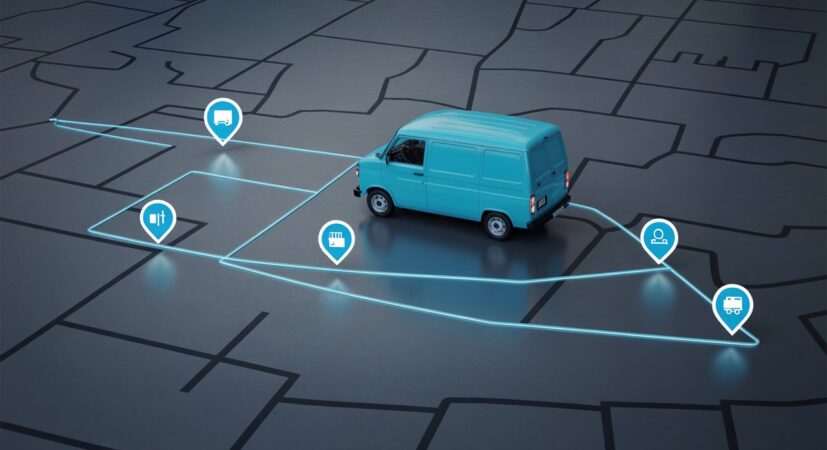Key Takeaway:
Efficient Distribution Route Planning and seamless payment collection are transforming distribution management, driving cost savings, operational efficiency, and customer satisfaction. Leveraging advanced tools and best practices, businesses can optimize their distribution networks and stay ahead in a competitive market.
In today’s fast-paced supply chain landscape, Distribution Route Planning stands as a cornerstone for efficient distribution management. Companies that master route optimization and payment collection not only reduce operational costs but also enhance customer satisfaction and cash flow. With the rise of digital solutions and intelligent software, businesses are reimagining how distribution networks operate, ensuring every delivery and transaction is streamlined for maximum efficiency.
The Importance of Distribution Route Planning
Effective Distribution Route Planning ensures that products reach their destinations on time, using the most efficient routes. This process minimizes travel time, reduces fuel consumption, and lowers operational costs. Modern distribution management software leverages artificial intelligence and real-time data to dynamically adjust routes, accounting for traffic, weather, and delivery priorities. As a result, companies experience up to 30% reductions in travel time and 20% savings in fuel costs, directly impacting their bottom line.
Key Technologies in Route Optimization
The integration of route planning software for distribution has revolutionized logistics. Cloud-based platforms, IoT-enabled tracking, and AI-driven analytics provide real-time visibility and predictive insights. These technologies enable dynamic routing, allowing businesses to respond instantly to disruptions or last-minute changes. Additionally, features like geo-fencing and performance analysis help monitor field sales teams, ensuring accountability and productivity across the distribution network.
Best Practices for Efficient Distribution Route Planning
To achieve optimal results, companies should adopt the following best practices:
- Utilize distribution route optimization strategies to continuously refine delivery schedules.
- Implement distribution management software that integrates with sales tracking and order management systems.
- Regularly analyze delivery data to identify bottlenecks and areas for improvement.
- Encourage collaboration between logistics, sales, and customer service teams for holistic planning.
- Embrace sustainability by optimizing routes to reduce emissions and support green initiatives.
Streamlining Payment Collection in Distribution
Efficient payment collection is vital for maintaining healthy cash flow. The adoption of digital payment solutions for distributors has surged, with 75% of adults globally now using digital payments. Automated payment collection tools integrated within distribution apps reduce errors, speed up transactions, and enhance security. AI-powered fraud detection and mobile wallet integration further streamline the process, making it easier for field teams to collect payments on the go.
Overcoming Challenges in Distribution Management
Despite technological advancements, challenges such as data privacy, regulatory compliance, and last-mile delivery complexity persist. Companies must invest in secure, scalable solutions and provide ongoing training to their teams. In regions with limited digital infrastructure, gradual adoption of mobile-based payment and route planning tools can bridge the gap, ensuring all stakeholders benefit from improved efficiency.
How Smart Solutions Empower Distribution Teams
Field sales management for distributors is evolving with the help of advanced apps that combine sales tracking, order management, and payment collection. These tools offer real-time insights, automate routine tasks, and support remote attendance and payroll management. By leveraging such solutions, businesses can optimize their distribution networks, improve accountability, and drive growth.
Key Finding:
Companies using integrated distribution management platforms report up to 25% reduction in operational costs and significant improvements in payment collection success rates.
Why Choose a Comprehensive Distribution Management Solution?
A robust distribution client management system not only streamlines route planning and payment collection but also enhances overall sales performance. Solutions that offer features like expense management, lead tracking, and performance analytics empower teams to make data-driven decisions. Businesses seeking to stay competitive should consider adopting platforms that unify these capabilities, ensuring seamless operations from order to payment.
Indirect Highlight: Twib as a Solution
For organizations aiming to modernize their distribution processes, adopting a comprehensive field sales and distribution management app can be transformative. Platforms that offer integrated distribution route planning, sales tracking, and automated payment collection—like those available in the market—enable teams to work smarter, not harder. Businesses are encouraged to explore such solutions to unlock new levels of efficiency and growth.
Conclusion: Take the Next Step in Distribution Excellence
Streamlining distribution management through advanced Distribution Route Planning and payment collection best practices is no longer optional—it’s essential for success. By embracing modern technologies and proven strategies, businesses can achieve greater efficiency, reduce costs, and enhance customer satisfaction. Now is the time to empower your distribution teams with the right tools and take your operations to the next level. Consider leveraging a comprehensive solution to experience these benefits firsthand.
Ready to transform your operations? Empower your team with TWIB’s advanced Distribution Route Planning and payment collection tools—optimize routes, cut costs, and boost performance today!

